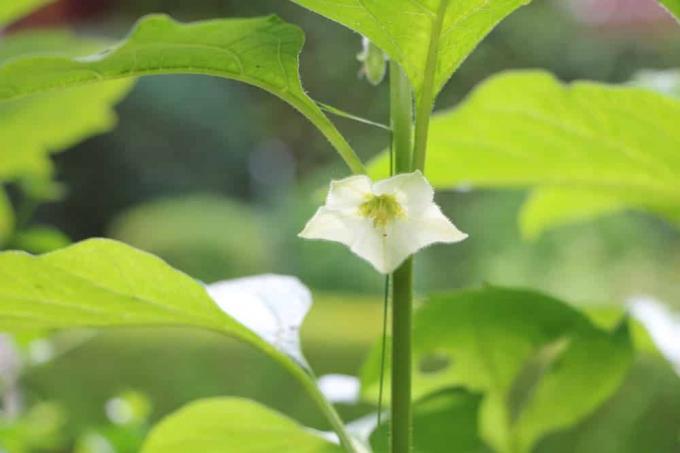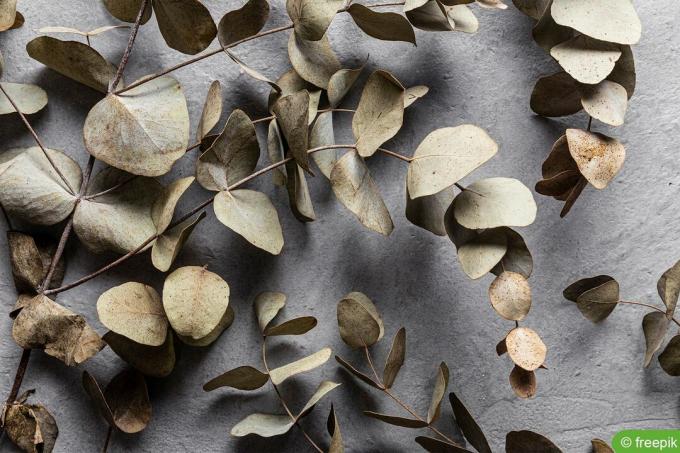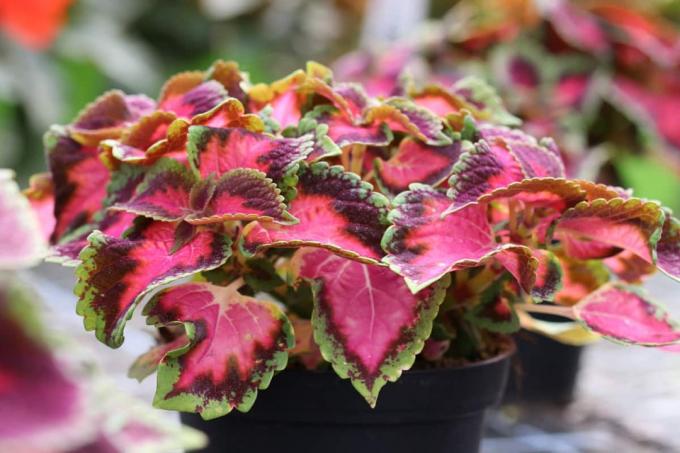

Table of contents
- hibernate
- Preparation
- Location
- Pour
- Outdoor winter protection
- waste
- Thin out
- Horny drives
- radical cut
Physalis plants come from the Andes and are perennial plants here, but not frost hardy and therefore only found as annual plants in a moderate climate. With appropriate hibernation, however, it is also possible to preserve the physalis in the local regions. We reveal here how this works and what role the blend plays.
hibernate
If the Physalis plants, also known as Andean berries or Cape gooseberries, are cultivated in tubs, overwintering is relatively easy. In principle, it is only necessary to bring the physalis indoors when the outside temperature falls below 12-15 °C.
Of course, there is more to successful hibernation than just putting them in a protected area.
Preparation
Appropriate measures must be taken in advance so that the Physalis plant can optimally prepare for the dormancy period during the winter. These include:
- Harvest ripe fruit
- Gradually reduce the amount of water from September, but never let it dry out
- Stop fertilizing completely at the beginning of September
- Trim if necessary
Tip:
Immature, still green berries can and should be left on the plant. They are still ripening on the plant. If, on the other hand, they are harvested unripe, they no longer ripen.
Location

The physalis plant also needs as much light as possible in the winter quarters so that no vergering shoots can develop. These occur when the plants are too warm and too dark at the same time. The shoots are weak and usually have hardly any leaves. They serve to counteract the light and thus ensure sufficient synthesis performance. If they occur, the plant must be placed either brighter or cooler. The twisted shoots can be cut off.
So that it doesn't get that far in the first place, the following points should be observed when choosing a winter location:
- Maintain temperatures between 12 and 15 °C
- Place physalis plants as brightly as possible, if necessary use a plant lamp by the hour
- Protect plants from drafts
Pour
Even if the amount of water should be reduced in September so that the Physalis plants can prepare for hibernation, the substrate and root ball can still do so do not dry out. It is therefore important to regularly check the moisture content of the soil. Once the top layer has dried, it can and should be watered.
During the hibernation, however, it is better to give only small amounts of water at a time and not to pour in a flooding manner as in the growth phase. Therefore, the condition of the soil should be checked more often to prevent drying out. It is also important that no cold water is used to water the Physalis plants. It should also be at room temperature, i.e. not cooler than 12 °C.
Outdoor winter protection
In regions with very mild winters, Physalis plants can be left outdoors if they are adequately protected. However, hibernation then becomes more difficult. In these cases you need:
- Reduction of watering and renunciation of fertilization from September
- Removal of damaged or dead plant parts
- Harvest the plant and leave no berries on the crop
- Apply mulch, sticks and/or straw to protect the roots
- Wrap perennials with garden fleece to protect leaves and shoots from frost
- In dry winters, water on frost-free days
The problem with this type of overwintering is that the plant has to be protected but also needs light and water at the same time. Although a cover reduces the risk of frost damage, it also reduces the incidence of light. If you do not want to keep protecting yourself and removing it on sunny, warm days, it is better to overwinter the physalis plants indoors.
waste
Waste and overwintering - at first glance, these care measures do not seem to have anything in common. In fact, there are mainly two good reasons for pruning the Physalis plants before and during the hibernation:
- The plants are often too big to be easily overwintered indoors without cutting. Shortening the shoots makes wintering easier or even possible in the first place.
- If the crop is blended, energy is saved. The shoots do not have to be cared for and preserved. The lower watering and the lack of fertilization therefore do not lead to a restricted supply of the physalis.
However, it should be mentioned that the physalis plants do not necessarily have to be cut. As an alternative, it is also possible to let the plants hibernate in a nursery or let them do something brighter and warmer, so that more can be poured and the fertilization can start earlier again can.
Thin out

An important care measure for physalis plants is regular thinning. Here only disturbing shoots are removed, which cross each other, grow too close together and bear neither flowers nor fruit. In this way, fruiting shoots get more light and air, reducing the risk of diseases and also difficult-to-control pest infestations.
The following points should be noted here:
- Use a clean cutting tool
- Disinfect scissors or knives before and after use
- Thin out as often and at short intervals as possible so that the measure is gentle on the crop
It can therefore be pruned all year round and as needed. This also applies to the hibernation period.
Horny drives
As already mentioned, horny shoots form when the physalis plants are warm but too dark at the same time. The shoots strive for the light, but are weakly developed and leafy. So if very long and usually pale colored shoots fall out, the location or the conditions at the location must be changed. If it is not possible to lower the temperature, the location must be made brighter. Since the natural incidence of light in winter is not always sufficient, a remedy can be found with plant lamps.
In terms of waste, the Geiltriebe are not an obstacle. They are easy to spot and easy to remove. It is important that cutting off the light-seeking shoots does not solve the cause of their emergence. If they are simply removed, new horny shoots will follow until the care conditions are changed or the plant has exhausted its strength.
radical cut
If the physalis plants are too large to be overwintered indoors, a more radical cut is recommended, i.e. a radical cut. For this, the height of the plant is reduced by a third to a half. In order to create a visually beautiful picture, a main shoot can be left a little longer than the surrounding shoots. The measure can be carried out particularly gently from autumn to winter.
 garden editorial
garden editorial I write about everything that interests me in my garden.
Learn more about overwintering plants

Eucalyptus dries up during the winter: what to do?
Eucalyptus in tubs spends the winter best in a frost-protected place in the house. It is not uncommon for the beautiful eucalyptus plants to dry up during the winter. We show what you can do about it.

Is bamboo hardy? Hibernate bamboo correctly
A bamboo can undoubtedly enrich any garden. But can it survive winter temperatures in good health? There is no general answer. It depends on the species and what winter protection it gets.

Is the colored nettle hardy? 6 tips for wintering
Summer is the season when the colors of these ornamental foliage plants are at their most intense. Most of the leaves are multicolored, with different drawings, wavy or heavily slit edges.

Is Camellia japonica hardy? Overwinter camellia properly
Anyone who sees a blooming camellia for the first time will definitely be amazed. The attractive plant, which came to Central Europe from Japan and Korea, has taken the hearts of hobby gardeners by storm. It is usually cultivated in tubs. Is she hardy?

Is the magic flower hardy? | Overwinter Mirabilis jalapa
The Japanese miracle flower (Mirabilis jalapa) delights its viewers with its bright and colorful flowers from June to October. It carries up to five different colored flowers on one and the same plant. Even a single flower can be multicolored.

Is rhododendron hardy? 6 tips for wintering
Overwintering rhododendrons: With these 6 tips you can get the azaleas through the winter safely!



